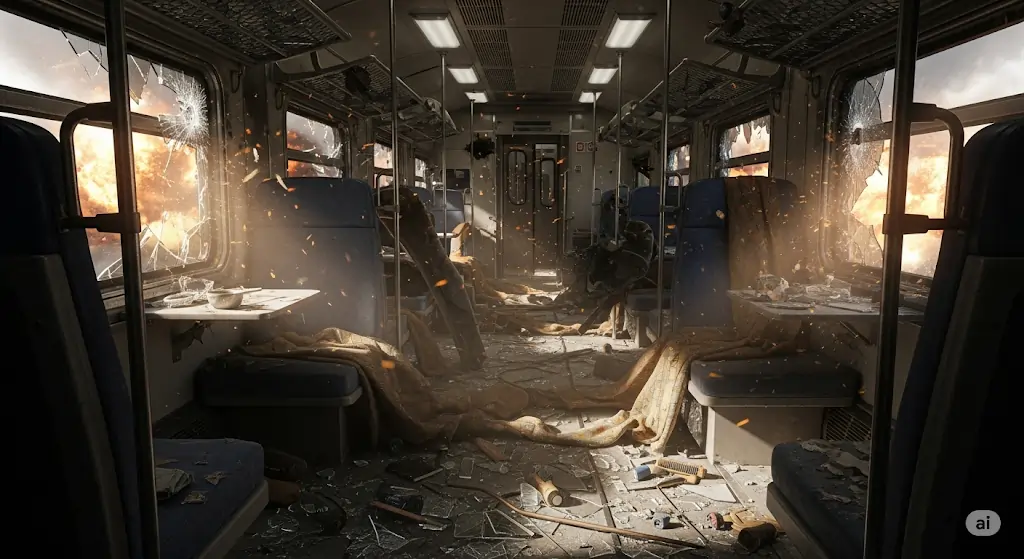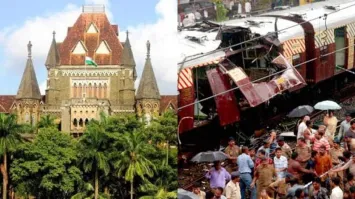
Mumbai, the financial capital of India, was rocked by a series of seven bomb blasts on July 11, 2006. Aimed at its suburban railway service—a vital transport system used by millions of daily commuters. The blasts, which occurred in a sporadic series of turnaround time of only 11 minutes at peak time—the rush hour between 6:24 PM and 6:35 PM—occurred in first-class compartments of local trains on the city’s Western Railway line on the way to stations like, among others, Matunga, Mahim, Bandra, Khar, Jogeshwari, Borivali, and Mira Road.
The Mumbai Train Blasts Case involved pressure cooker bombs with explosive material contained. In total killed 187 people, seriously injuring over 800, and it ultimately left a deep emotional scar in the city. The bombings were among the worst terror attacks in India’s history and sparked significant national outrage following the announcement of the attack and further prompted a national mobilisation of law enforcement. The Maharashtra Anti Terrorism Squad (ATS) was initiated on what amounted to be a high-stakes investigation. Under suspicion of terrorist organisations like the Indian Mujahideen and Lashkar-e-Taiba, and no group had claimed responsibility at that time.
Investigation and Prosecution Efforts
The ATS acted swiftly and arrested 13 suspects within months of the attacks. All 13 were charged under serious laws, including MCOCA, the IPC, anti-terrorism laws, and the explosives law. The prosecution’s case relied on confessional statements, witness testimonies, and physical evidence. This included explosives, circuit boxes, and maps. The prosecution claimed these showed the suspects were part of a conspiracy.
The investigation found that the bombings were carefully planned. Suspects like Ehtesham Siddique and Faisal Shaikh were accused of targeting specific sites to destabilise Mumbai. The ATS claimed the suspects were part of a larger terror network and had received training in Pakistan. The investigation later came under scrutiny due to procedural flaws. Some confessions appeared coerced. The ATS was also criticised for misplacing key evidence. These issues later played a major role in the case’s collapse. Also Read: Why Indians are losing trust in the Judiciary. How can it be restored
The 2015 Special Court Verdict
In September 2015, MCOCA special court passed the judgement after a lengthy trial. The court convicted and sentenced five of the thirteen accused – Faisal Shaikh, Asif Khan, Kamal Ansari, Ehtesham Siddique and Mohammed Sajid to death because they were the central and key experts involving in conspiracy, to sentence the remaining seven – Tanvir Ansari, Mohammed Ali, Majeed Memon, Shaikh Mohammed, Sohail Shaikh, Muzammil Shaikh and Zamir Shaikh, each to life imprisonment. One accused was acquitted due to lack of evidence.
The court committed a confessional statement taken under MCOCA since MCOCA allows confession statements as evidence whereas in standard criminal law that would not be allowed as evidence. The remainder of the evidence that was available for the court was arms and explosives and maps that had been recovered as well as the identifications that the witnesses made. The special court verdict was a major move for justice for the victims yet the defence was adamant that they were going to appeal the verdict claiming the evidence including confessions were obtained by fabrication.
Bombay High Court’s Landmark Finding
On July 21, 2025, the Bombay High Court, in a division bench with Justices Anil Kilor and Shyam Chandak, set aside the 2015 decision and acquitted all 12 accused. The court’s scathing judgement recognized that the prosecution “utterly failed” to prove any charges beyond a reasonable doubt. The court dismantled the prosecution’s case on several fronts: witness statements were deemed wholly unreliable because the identification parades were not conducted properly; confessional statements were deemed inadmissible, likely obtained through torture or coercion; and the prosecution then failed to prove several other issues including the type of bombs used and chain of custody for explosives, circuit boxes, and other evidentiary materials, which were poorly preserved.
Items produced, including maps and arms, were found lacking direct links to the accused or to the crime. The ruling was released 19 years after the attacks and definitely illustrated the judiciary’s reliance on a body of evidence, while also highlighting clear failings in investigative and prosecutorial duties. You may be interested in: Hate Speech V. Freedom Of Speech: A Constitutional Tightrope
Public Reactions and Broader Implications on Mumbai Train Blasts Case
The acquittal produced starkly divergent reactions. The defence celebrated the verdict as a victory for judicial integrity. In their appeals, they argued that the accused, who spent nearly two decades in custody, were wrongfully implicated. However, public reaction was largely of shock and frustration. Many posts on X called the acquittal a major failure of justice for the victims and their families. Like the verdict, the case drew strong criticism of India’s anti-terror legal system. In particular, reliance on MCOCA as the main law used was questioned. MCOCA has been criticised for its broad scope, vague provisions, and potential for misuse.
The ruling re-hijacked debates about important individual rights constituting fair process to counter-terrorism (time-considered limitations under anti-terrorism regimes and procedural length, and reexaminations of detentions where the accused are imprisoned without conviction). On another note, the acquitted still have rights, and validations through the prosecution rights to appeal to the Supreme Court prolongs the re-opening of this malevolence yet again. The vastly publicized primary ruling also suggested emergent challenges to purposeful investigation and terrorism altering major areas in prosecution concerns; intricacies over procedural legitimacy and proof is ruled paramount.
For Mumbai, full closure remains elusive even after the 2006 attack. Questions are still unanswered, and victims’ families and survivors continue to struggle. As one said, “Whatever grief you want to use, is still going to be there, as you have lost your loved ones.” The case also served as a reminder of the heavy burden on judges. They must uphold the principle that guilt must be proven beyond doubt—even when national interest is at stake.
